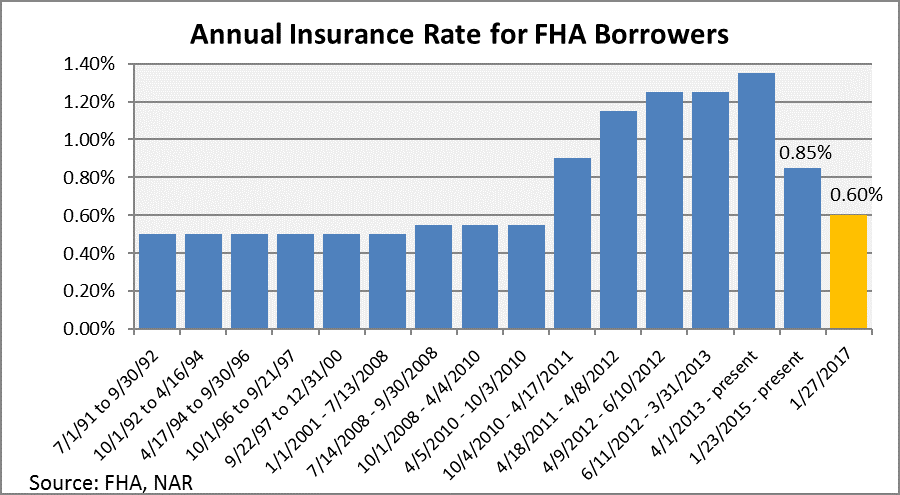In a move that signals greater normalization of the housing market, the FHA announced a reduction in its annual insurance premium of 25 basis points. This move would reduce the fee it charges from its 0.85 percent to 0.6 percent. NAR estimated the merit of such a 10 to 25 basis point reduction last spring. On a monthly basis, an FHA borrower who purchases a home at the November median home sale price of $234,900 would save $48 each month or nearly $3,000 over five years.
In the wake of the subprime crisis, private mortgage insurers pulled back from the market and the FHA expanded in a countercyclical role to support the housing market and the greater economy. To offset rising losses on its portfolio, the FHA raised fees and tightened its underwriting. In the spring of 2015, the FHA made its first cut to its then high 1.35 percent premium down to 0.85 percent.
The last FHA premium cut was credited with helping to shore up the FHA’s books and to help restore its capital ratio above the statutory 2.0 percent level. Lower fees helped FHA to retain better borrowers from refinancing to private mortgage insurers who had re-entered the market, but more importantly it helped to improve affordability allowing many previously sidelined borrowers to qualify for a home purchase. An analysis by the Federal Reserve Board economists conservatively estimated a 2.0 percent expansion of the purchase mortgage market as a result of the last 50 basis point reduction in the fee or roughly 70,000 additional home purchases annually. Based on the Fed economists’ methodology, this 25 basis point reduction could result in an additional 35,000 buyers entering the market. The change in fees could delay some closings as borrowers jockey for the reduced premium and due to temporary boost in refinances, but the net effect would be greater home sales.
The FHA has once again reduced its premium. This change is important support for entry-level and non-pristine borrowers, particularly as mortgage rates begin to tick upward. However, this change is also an important signal to the market that the Federal agency has successfully recovered after its critical mission of supporting the housing market during the great depression.
Powered by WPeMatico


